This absolutely cute dog you cannot get enough of is, of course, the Samoyed dog! It is unfair how cute this little pooch is.
Famed for the profuse coat of white fur, which makes it look like a snowball, is one of the most liked characteristics of the Samoyed dogs.
This adorable dog comes all the way from Serbia, Russia and is built to withstand extremely cold temperatures. Their plentiful undercoat regulates their body temperature and helps to fight the cold.
They are big family lovers. They enjoy the company of humans and will do absolutely anything for attention.
They love kids! They make excellent companions. They are a treasure trove of attention and cuddles.
Table of Contents
Samoyed Pictures
Quick Facts

Avg. Weight: 45-65 lbs (Males), 35-50 lbs (females).
Avg. Height: 21-23.5 inches (Males), 19-21 inches (Females).
Life Expectancy: 12-14 years.
Dog Group: Working.
Colors: White, Cream, White and Biscuit.
At A Glance
Size: (3/5)
The Samoyed size is moderately huge. The average Samoyed weight is 50-60 lbs and they stand fairly 22 inches tall.
Affection Level: (5/5)
Samoyeds are perhaps the most affectionate dogs out there. They are quick to bond with family and thrive on human company.
Apartment Friendly: (2/5)
You can keep a Samoyed in an apartment only if you are meeting its exercise needs. Samoyeds also suffer from separation anxiety and howl or cry for company.
This may be an issue for neighbors.
Cold Weather Tolerability: (5/5)
Samoyeds are built for the cold weather. The dogs have lived and traveled through extremely cold temperatures.
Hot Weather Tolerability: (1/5)
Their profuse undercoat perhaps has a disadvantage. Samoyeds and warm temperatures do not go well together. You need to have a fully functional air conditioner or a cooler.
Barking Tendencies: (3/5)
Samoyeds tend to bark and howl when left alone. They cry for company. This may be a bit of a problem.
Cat-Friendly: (2/5)
Samoyeds are friendly with cats, especially the ones they are born with. Sammies have a high prey drive and can chase cats. Make sure you are around and don’t encourage rough play.
Dog-Friendly: (5/5)
The Samoyed temperament is calm and composed. This makes it a very friendly dog. It does not possess any aggressive or intimidating streaks.
Exercise Needs: (4/5)
The Samoyeds are highly active dogs who require tons of exercise. Make sure you have the time to meet this requirement.
Grooming Needs: (3/5)
The Samoyed coat requires regular brushing to prevent matting. They can go without bathing for about six months. The Samoyed adult should be bathed every three months.
Playfulness: (5/5)
The Samoyed breed dog is highly active and always ready to play. They love to run and play fetch.
Trainability: (4/5)
Samoyeds are highly trainable and easy to housebreak. Once trained properly, they are excellent and obedient dogs.
Intelligence: (3/5)
Samoyeds are popular for their high intelligence and adaptive instincts.
Mouthiness: (3/5)
Samoyeds are no innocent dogs when it comes to chewing. They do this either when they are bored or alone. They do not drool or slobber.
Price Group: (3/5)
The Samoyed cost ranges anywhere between $600 to $1500. However,the cost of dogs of higher bloodlines and superior dog breeds can go as high as $3000.
About Samoyed
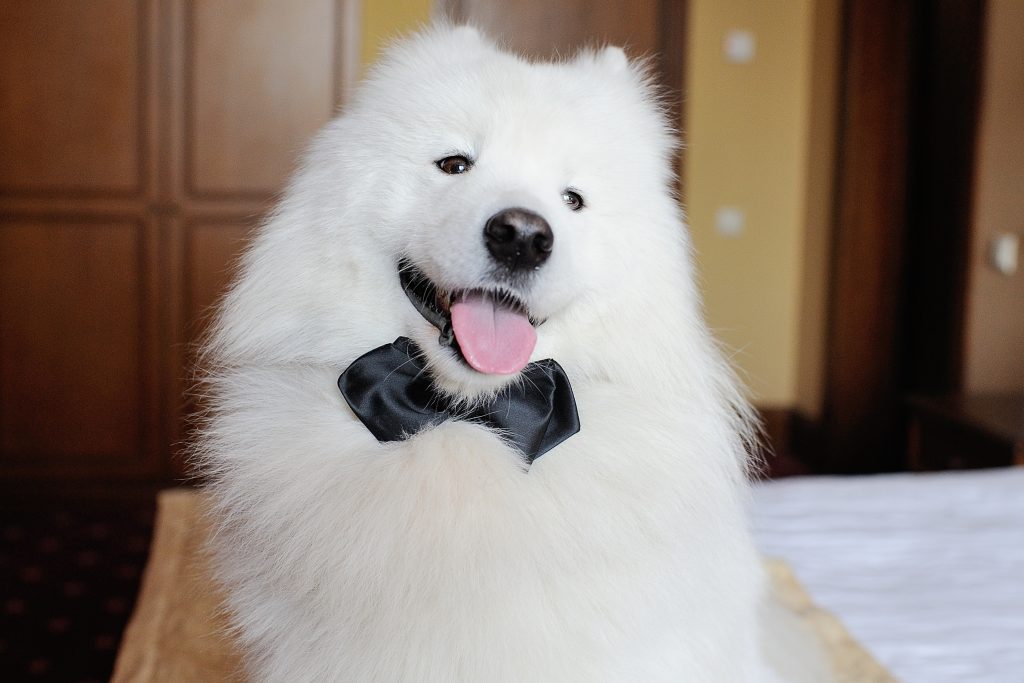
The Samoyed is a loving, caring and highly affectionate dog. It makes a great family dog and wants to be a part of everything you do.
They are quick to form bonds with family but they have a soft spot for a special someone in the family.
They are agile and extremely active, emphasis on the extremely. So, it is a given that this dog has very high exercise requirements. They need at least two hours of exercise daily.
They have a placid and calm temperament. Samoyeds are not hyper-active like other working dog breeds. They are quite gentle and docile in nature.
They can outlast cold temperatures and love to play in the snow.
However, if you leave your Samoyed alone for long hours. It may chew furniture or something else if he is bored. Samoyeds demand a lot of time and attention.
They need to be groomed religiously to keep their luxurious hair coat manageable.
Where Did Samoyed Dogs Come From?
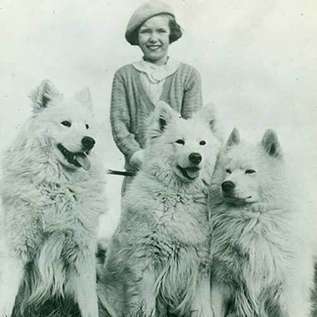
The Samoyed origin dates way back in history. The Samoyed dog was used to hunt, haul sledges and herd reindeers in Siberia for Samoyedic people.
The Samoyeds were treated very kindly by the Samoyedic people. After a hard day of work, the Samoyeds were included in family activities at night.
This sense of belonging is what perhaps has made the Samoyed dog so loyal and trustworthy to this date.
The Samoyeds left Serbia in the late 1800s and the early 1900s to haul sleds on polar expeditions. They were on Sir Ernest Shackleton’s journey to the Antarctic.
The Samoyed dog has faced a lot of adversities and they have managed through them. This is testimonial to the fact that the Samoyed is one of the strongest dogs there is.
The first Samoyed who came to England was called Antarctic Buck. He was brought for Queen Alexandra who was fond of this breed.
To this day, there are many English and American Samoyeds who have descended from her kennel.
In 1990, the first standard of the breed was introduced and adopted in England. The Samoyed Club of America was founded in the same year that this breed was introduced and adopted in America in 1923.
Trainability
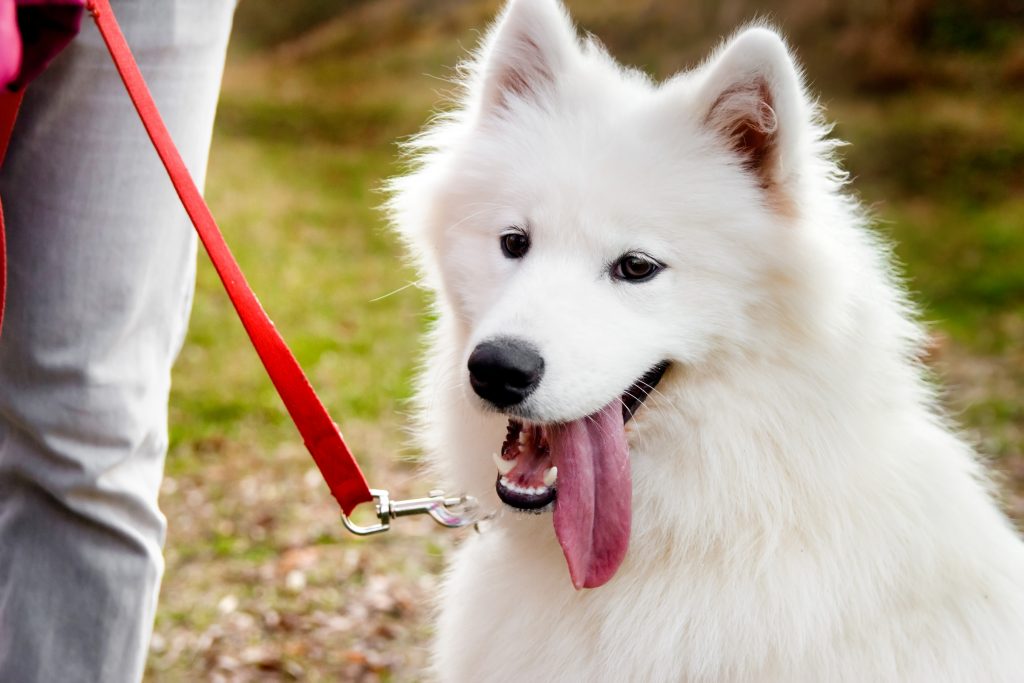
Samoyed dogs are intelligent and hard-working. With the right kind of training, they become the most obedient dogs you’ll ever meet.
You should start the very day that your Samoyed comes home. Establish yourself as the alpha in the house.
Do not let the Samoyed self-appoint itself as the authority because doing so will make the training process very difficult.
Give your Samoyed some work to do. They get bored when idle. Giving him a task increases his self-confidence which stimulates mental health.
Exercise for the Samoyed is very important as they are highly energetic and agile dogs. They will feel free to channel this energy to some disastrous chewing and naughtiness.
Talk to your Samoyed in a happy voice. Give him commands like come here, sit or stay. Treat him when he listens to you but refrain from spoiling him with treats.
Grooming

As beautiful as the sumptuous haircoat is, it does require regular brushing to keep the hair feasible. The Samoyed shedding is generous, so you might want to keep a lint roller handy.
Samoyeds can go without bathing for as long as six months. As your Samoyed becomes older, you should bathe it as frequently as six months.
Shaving or cutting off the Samoyed’s fur is OFF the table as it can really disturb their body functioning. They need the fur as it helps them regulate body temperatures. The Samoyed hypoallergenic fur does shed generously and will reach every corner of your house.
Take care of dental hygiene is important to prevent periodontal diseases from prevailing.
Clip nails every month or so depending upon the requirement. If you hear them clicking on the floor, they are too long and need to be clipped.
Nails have blood vessels in them, so do not cut deep into the nails. It will cause bleeding and crippling pain.
Every visit to the groomer could cost you $53. You can choose professional grooming or do it yourself, whichever works for you.
Introduce these practices in the Samoyed puppy years. It will be much easier later.
Common Diseases

TARGETING THE BONES
Hip and Elbow Dysplasia
This condition occurs when the bones begin to have an abnormal formation in the hip and elbow socket. This leads to arthritis and should be treated as early as possible.
You might have a reason to worry if your dog is having difficulty in getting up or refuses to go up or down the stairs.
If the Samoyed dog is overweight then it is prone to this disease much higher than a normal weight Samoyeds. In most cases, surgery is opted for to help the dog recover from this unbearable pain.
Patellar Luxation
This disease is also known as “slipped stifles”, which is very common in most dogs.
The patella has three parts – the thigh bone, knee cap, and the calf. When these three are not in line, it can cause patellar luxation.
This could cause lameness in the leg or gait. This condition prevails at birth although the misalignment does not occur until much later.
Having this condition could lead to arthritis, a degenerative joint disease.
TARGETING THE EYES
Glaucoma
Glaucoma is the increased pressure in the eye.
It is found in two forms – primary and secondary.
Primary glaucoma is hereditary, secondary glaucoma is caused by decreased liquid in the eyes due to other probable diseases.
Symptoms of glaucoma are loss of sight and pain, treatment and prognosis but they vary depending upon the type.
Glaucoma is treated surgically or with eye drops.
Progressive Retinal Atrophy (PRA)
This is a hereditary disease that runs in the Samoyed family.
In this disease, there is the continual decaying of the retina. In the early stages of this disease, the dog is prone to night-blindness and eventually, they lose sight during the day too.
Most dogs are known to adapt to this condition very well provided they are living in the same house or environment.
TARGETING THE BODY
Subvalvular Aortic Stenosis
This condition usually occurs when there is a narrow or tapered connection between the aorta and the left ventricle of the heart.
Symptoms include fainting and fatal attacks. Consult your doctor as soon as possible and get the proper treatment required.
Cancer
Canine cancer has a couple of symptoms such as unusual swelling of a sore or a bump, sores that do not heal, bleeding from any openings and difficulty in breathing, urinating or defecating.
Treatments for cancer are chemotherapy, surgery, and medication.
Samoyed Hereditary Glomerulopathy
As the name suggests this is a hereditary condition of the kidney.
The severity of this condition peaks among those males who appear healthy in the first three months of birth.
The symptoms of SHG prevail later and are sometimes fatal by fifteen months of age.
In females, symptoms start to show very mildly in three to four months of age.
There is no genetic testing for SGH but research is continuing.
LIFESTYLE DISORDERS
Diabetes Mellitus
DM is a lifestyle disorder in which the body fails to regulate blood sugar levels. Diabetic dogs showcase a normal appetite but they will exhibit tremendous weight loss due to the inefficiency of food consumption by the body.
Symptoms are polydipsia (excessive thirst and urination), increase in food consumption and drastic weight loss.
Treatment includes control in diet and the regulation of insulin in the body.
Feeding
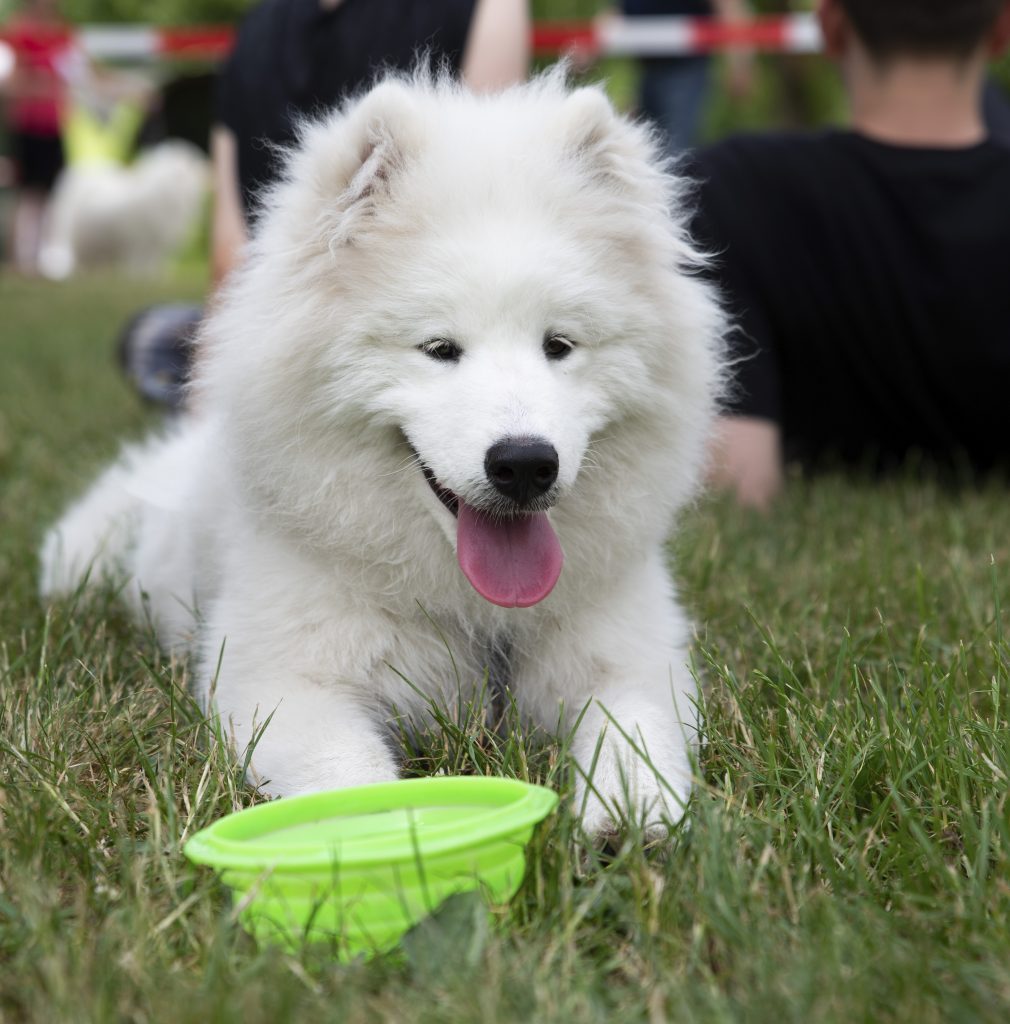
It is very important that you divide the meals into two. Stick to this time table and make sure your Samoyed is eating properly.
The recommended amount is 1.5-2 cups of serving high-quality dog food.
Make sure that your dog is eating highly nutritious food. Your dog requires generous amounts of protein in its diet. Refrain from feeding it food that has high carbohydrates and fats.
You can feed your Samoyed home-cooked dog food as well. To know more, you can refer to our article ‘A Guide To Homemade Dog Food’.
Samoyeds live much longer when their diet is regulated and healthy.
Suggested: Senior Dog Food
Vaccination and Care

Adenovirus
This virus causes respiratory problems infection and targets various organs of the Samoyed’s body.
Symptoms include depression, vomiting, loss of appetite, cough, glaucoma.
Distemper vaccine
This severely affects organs such as the spinal cord, respiratory system, brain, and intestines.
The common symptoms of having distemper are high fever, lethargy, loss of appetite, etc.
Parvo
This disease spreads through the infected dog’s hair or feet. It is fatal.
Samoyeds are prone to this virus.
Signs that your dog could have this are bloody diarrhea, depression, vomiting, fever, etc.
Hepatitis
Infectious canine hepatitis is a very serious condition caused by a highly infectious virus that affects the liver.
It develops extremely quickly in puppies and dogs.
Symptoms of hepatitis are vomiting, lethargy, fever, abdominal pain and an enlarged liver.
Rabies
This is a very damaging virus; it deteriorates the brains of all mammals.
Dogs secrete large amounts of this virus in their saliva and thus, a dog is infected with rabies when it is bitten by another dog.
Signs that a dog has rabies can be seen in behavioral changes such as restlessness and aggression. They become hypersensitive to touch, light, sound, etc.
Suggested: Guide To Dog Vaccination
Monthly Expense Estimation
A Samoyed is a pretty expensive dog when it comes to maintenance. You may have to spend around $350 in the first few months.
The average monthly Samoyed cost of keeping is $100.
Behavior

Children:
Samoyeds are boisterous and happy-go-lucky dogs. They got along very well with children. They are active and thus make great playmates for kids.
However, monitor playtime because no matter how no matter how friendly the dog is, it can be a tad bit rambunctious around children.
Sometimes it is unaware of children and might knock over the toddler, unknowingly.
Teach your children how to interact with dogs, how to approach them and not instigate or make them angry by pulling their tail or ears.
Dogs:
Samoyed dogs are very friendly when it comes to dogs. They get along well with the dogs they are raised with.
They are not domineering or aggressive in the presence of other dogs.
Cats:
Samoyeds are known for their friendliness with cats. It is playful in the company of cats.
But make sure they do not switch to rough play and chase down the cats in a way that could harm them.
They get along best with the cats they were raised with. Their relationship with the cats also depends on the behavior of the cat.
Overview
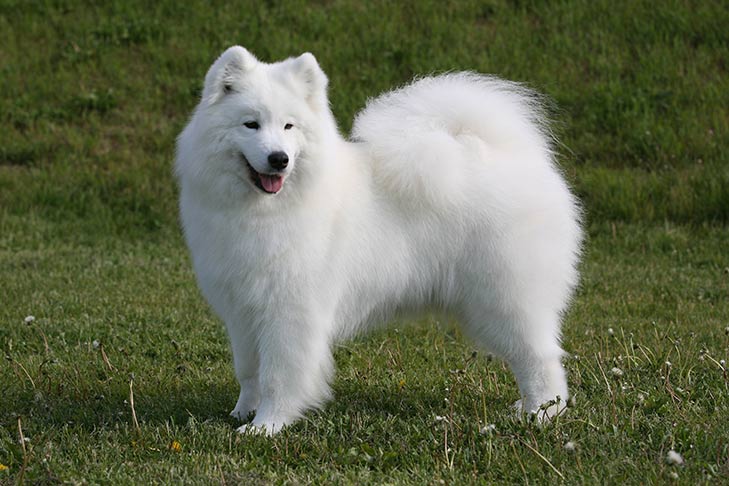
Samoyeds are one of the oldest breeds in the world.
They were originally used for hunting, herding, sledding and guarding. They love their family and are great with kids and other dogs.
Samoyeds have a relatively smaller appetite compared to other working dogs but they should have high protein in their diet.
It goes without saying that this dog is as mischievous as cute it is. Samoyeds love to play and enjoy human company. They hate being alone.
They have high exercise needs so make sure you cater to them accordingly. Make time for this dog, as it cannot get enough of your time!
Something Fun About Samoyed!

- Their name is mispronounced, almost every time. Sa-Moy-ed is the wrong pronunciation whereas Sammy-ed is the right pronunciation.
- They are on the list of the world’s oldest breeds.
- Their copious large coat is perhaps their best feature.
- The Samoyed dog is loved for its smile.
- They love to be a part of the family but they don’t shy from letting you know.
- They are affectionately called “Sammies”.

Happy Petting To You Guys!



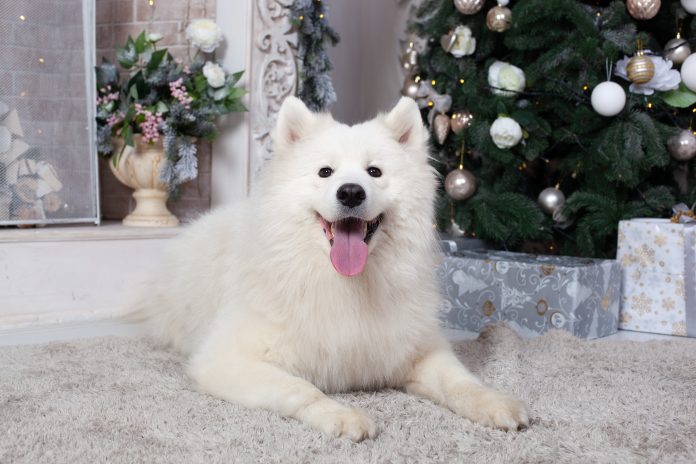

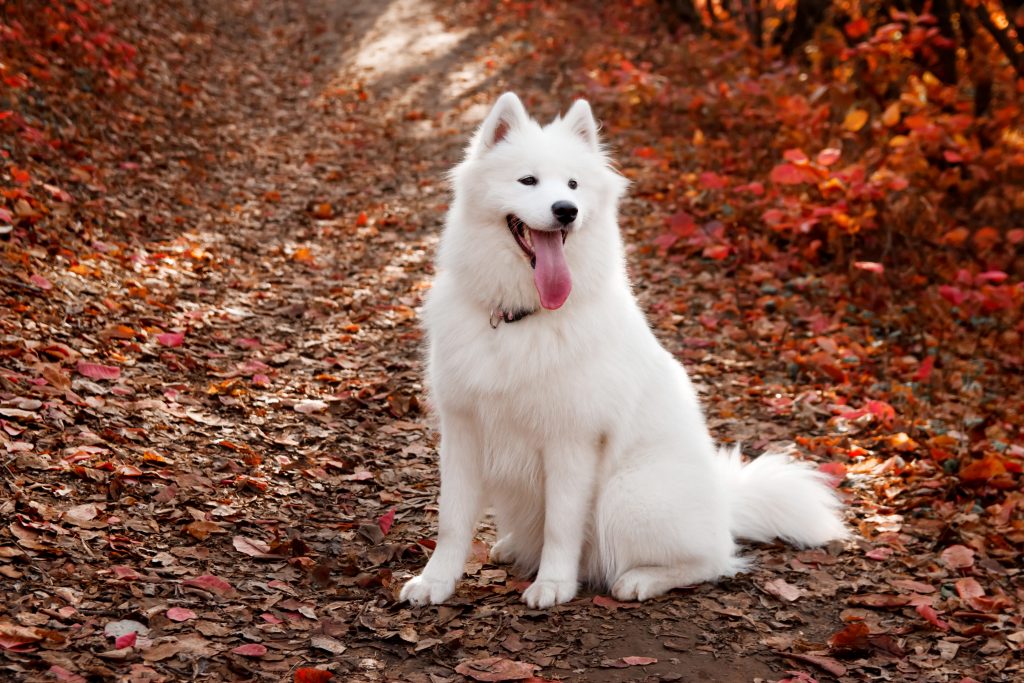
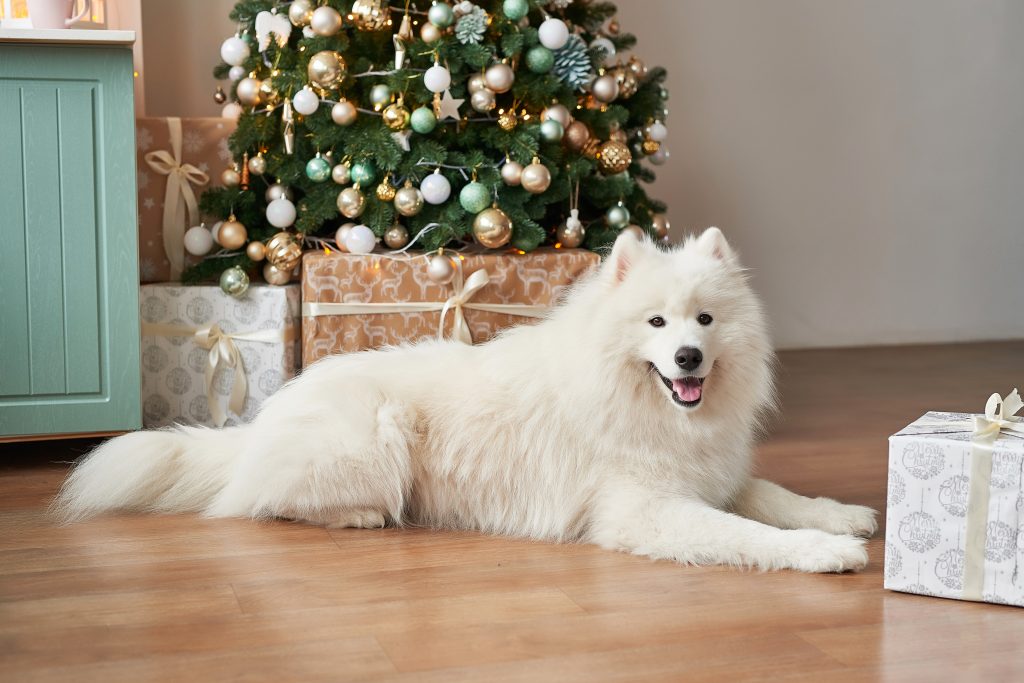

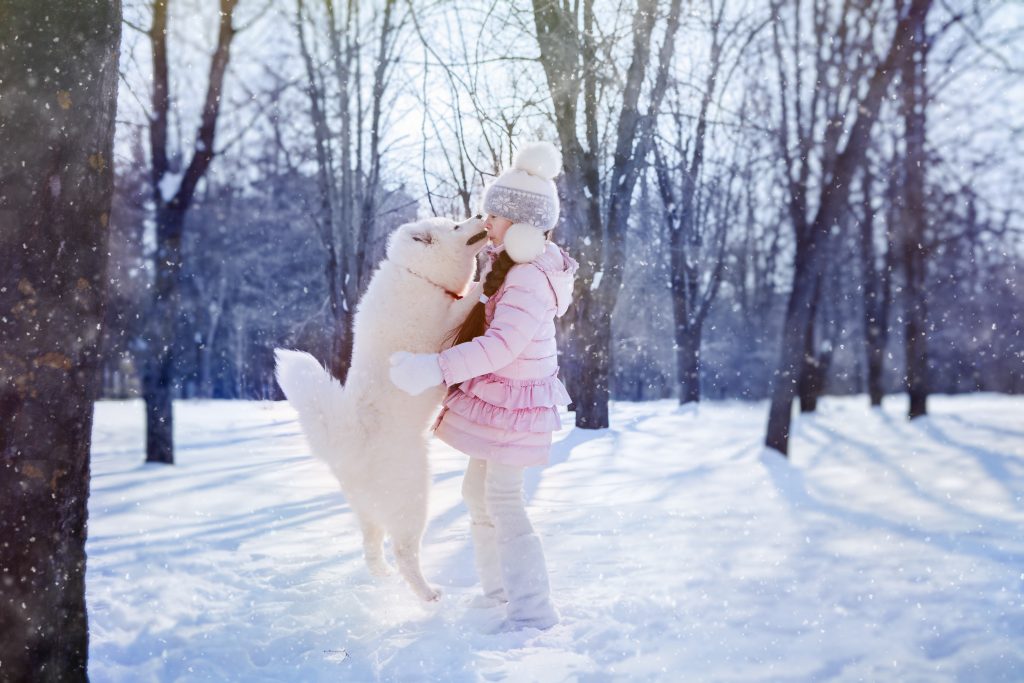
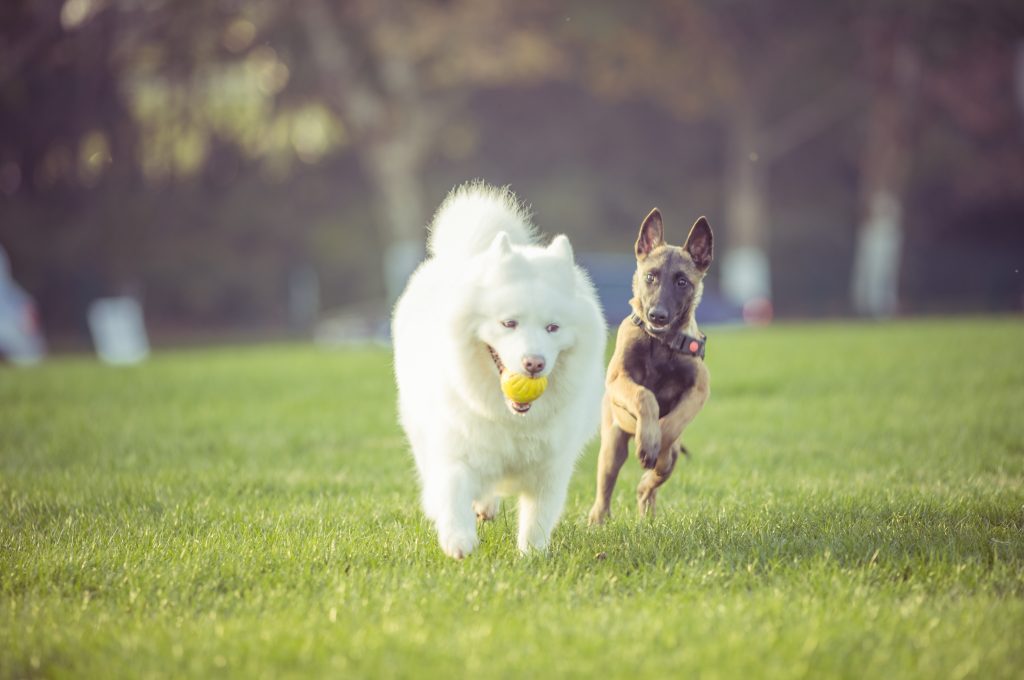
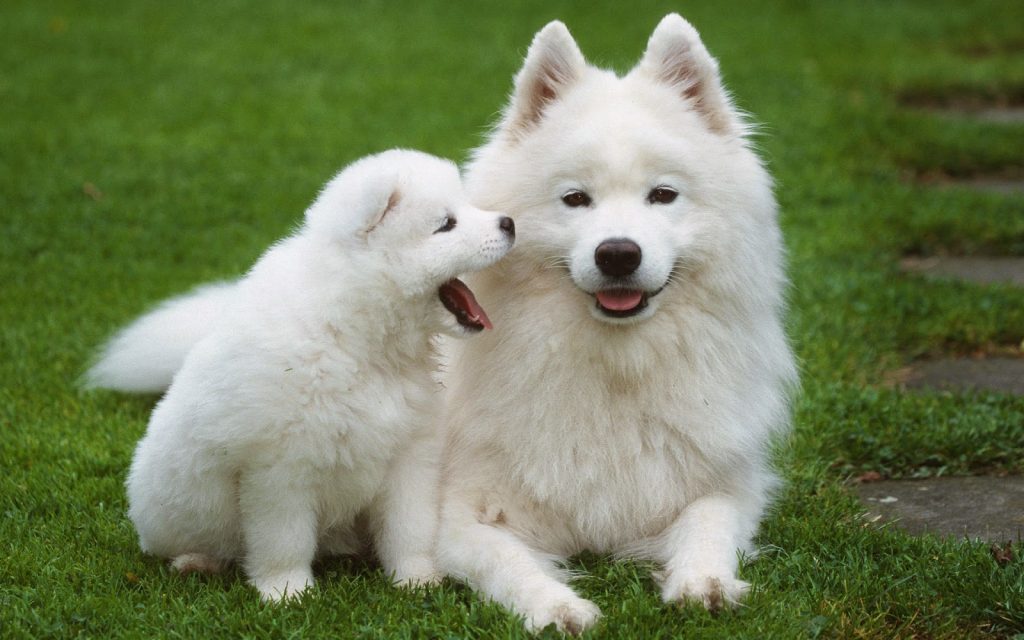








[…] German Shepherd […]